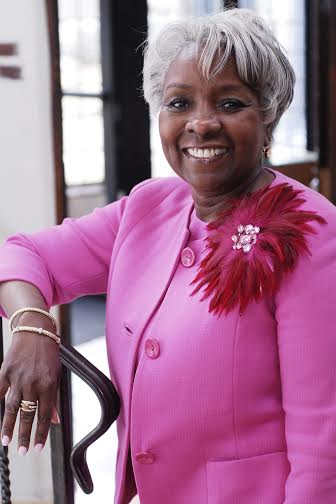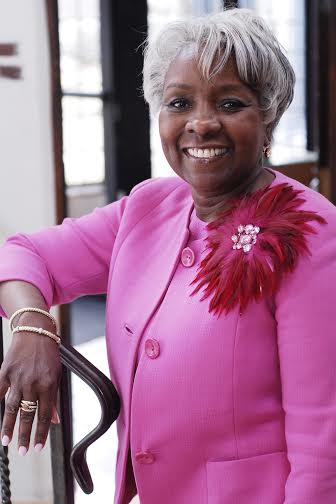As we begin emerging from the darkness of COVID-19, we’re starting to see the light at the end of the pandemic tunnel. So let’s take a few moments to review its impact on Black, Indigenous, & People of Color (BIPOC).
First, there is a racial wealth gap, which will cost the US economy an estimated $1 trillion to $1.5 trillion (or 4 – 6% of the US GDP) by 2028, not to mention its impact on the communities of color. COVID-19 will hurt the wealth gap. The reality of COVID 19 was much worse for BIPOC. BIPOC make up almost half of essential workers overall, making potential exposure worse. According to the Washington Post, only 20% of Black and 16 % of Latinx people reported having the ability to work from home. The CDC has reported BIPOC are much more likely to get the disease, be hospitalized, and succumb to COVID. An NPR/Robert Wood Johnson Foundation, T.H. Chan School of Public Health poll found 60% of Black, 72% of Latinx, and 55% of Native American families report their households are facing severe financial problems, compared to 36% of white households.
The reality of COVID-19 brought to light the disparities within the healthcare system, education, food supply, and transportation (to name a few). If you made it through the pandemic count yourself, fortunate, lucky, and blessed. Chances are, you may have had to use a bit or all of your emergency fund. So, count yourself fortunate, lucky, and blessed again, you had a fund to use, and COVID was undoubtedly an emergency. But what do you do now as we start to emerge from the pandemic?
Assess, evaluate, budget, plan, and be committed.
Assess
Assess your finances, it’s a scary process, but you have to know where you are to plot where you want to go.
- How disruptive was the pandemic to your finances? Take a good look at your finances – credit cards – housing – food- clothing? Are you on track or delinquent with your credit card payments? Create a budget – based upon where you are now to get back on track.
Evaluate
Understandably, the pandemic caused many of us to review our life goals and objectives. Take time now to evaluate your goals and objectives. Are your goals and objectives what you want for you and your family?
- What are your priorities? Do your priorities need to change? Should you adjust your timeline?
- What were your financial goals pre-pandemic?
- Were you saving for children’s college education, for your first home, or retirement?
- Revisit and revise your goals; does it make sense in light of what we’ve all just been through this past year?
- Don’t beat yourself up. Shame and finances are closely linked. Don’t let embarrassment hinder you from moving forward.
Budget
Take a look at your spending – this is an activity most of us don’t enjoy and don’t do often enough—this an exercise of reviewing your income and your expenses.
- How much is coming in, and how much is going out?
- Make sure you’re accounting for everything. What’s left could establish your emergency fund or build it back up.
- An emergency is likely to happen, and it may not be another pandemic; it could be illness or job loss. Be prepared.
As you look at your spending, think about the following:
- Are there things that I can eliminate post-pandemic, like the fees for ordering groceries online?
- Streaming subscriptions, what do you watch?
- Apps – do you use that exercise app, or did you use it once?
- How much take-out are you ordering? Add up three months’ worth of take-out and ask yourself, was the number more significant than I thought? Was that a good use of my money?
- Make this a game and see how much spending you can eliminate.
- Review your spending and your budget every three months to keep you on track.
Plan
If you didn’t have a plan – now is an excellent time to think about your financial future. Everyone’s time horizon is different and typically shorter than most of us think.
Your plan is different from your budget. Your plan has a more extended range and is long-term. Your budget, on the other hand, is day-to-day and is how you get to your goal.
- Revise your plan as you need to – but don’t ignore it.
- Seek the help of a professional. We would never consider extracting our own teeth, but we push back at hiring a financial planner or advisor. Seek professional help.
Commitment
Shame and guilt around personal finance are real. Don’t let either get in your way. Stay focused and committed to your goals.
- Review your plan and your budget regularly once a quarter.
- Ask your planner questions if you don’t understand. Their job is to support you.
- Ask your planner for an annual review.
- Keep your eye on the prize.
- Get a commitment partner – to help keep you on track.
In addition to your finances, you may want to consider how your financial plan works as you phase out of remote work and into the office.
There are a great many lessons learned from the pandemic. I learned the importance of family, nothing is promised to any of us. The pandemic underscored the need for childcare, the importance of teachers, the school day, and the value of essential workers.
Consider the following as you think about your re-entry into the office environment:
- Are you being asked to return to the office? One thing is for sure working from home was less expensive than commuting. Commuting costs went away during the pandemic for many of us, as did the cost for lunch, the $ 6.00-afternoon latte, dry cleaning costs, and the wear and tear on our bodies and our cars.
So if you are planning to re-enter, take stock of what I call workday costs. Do you want to have those added to your balance sheet, or is there an opportunity to keep the cost down? Can you make and bring your lunch? Do you need that latte?
Is it possible to continue to work remotely or a few days a week? Is that appealing to you? If so, then perhaps you’ll save on some of those workdays costs, and those savings can go towards your emergency fund, credit card debt, or retirement.
Remember, the easiest way to save is never to see the money. Instead, think about a 401K or an instrument that automatically puts money in a savings account each pay period. Many banks now offer this option.
These tips assume a good deal about where you are right now. This article assumes you are healthy and able to work; you are not grappling with childcare issues. You are still employed. If these assumptions are valid once again, count yourself lucky, fortunate, and hashtag blessed. No matter where you find yourself, you must do a reality check of finances as we emerge from the pandemic. Take the next step and look under the hood of your finances. You have to know where you are to determine where you are going and how long it will take you to get there. Ignorance is not bliss. Bliss is knowing where your money is and where it is going.
One final note - be kind to yourself as you embark on this journey. Do not beat yourself up! Stay the course, and breathe. It will take time to get back on track, but you and your family are worth it!
This blog is presented as part of the Institute's Diversity & Inclusion Week, June 14-20, 2021. Diversity & Inclusion Week aims to accelerate & diversify the composition within the industry's highest levels, create cultures of inclusivity, and widen the pathways to senior-level leadership roles across the industry for those currently underrepresented.
To learn more about Diversity & Inclusion week visit: https://content.investmentsandwealth.org/di-week-2021
Gale A. Britton is currently the managing partner of a consulting practice, GBDI LLC., where she focuses on Diversity and Inclusion strategy, education, recruitment and leadership development. Utilizing over thirty years of corporate experience, as well as fifteen years serving on non-profit boards focused on uplifting and empowering marginalized communities, she assesses and provides customized solutions for employers seeking to create and maintain a more inclusive work environment.

Prior to this, she was the Vice President, Diversity, and Inclusion of Prudential Advisors at The Prudential Insurance Company of America. In this role, she had responsibility for the development, communication, and coordination of Prudential Advisors' diversity and inclusion strategy. Before this role, she was the Vice President, Recruiting, and Selection responsible for all aspects of the hiring processes, of both new and experienced insurance sales professionals. Before joining Prudential, she was the Director of Employee Relations at Ogden Service Corporation. She has over thirty years of industry experience including twelve years at R.H Macy & Co., Inc. and six at Bloomingdale's Department Stores.
Gale graduated Magna Cum Laude from the State University of New York at Buffalo with a degree in Communications. Gale is the President & Chair of the Board of Trustees for Wynona's House, a child advocacy center located in Newark. Gale was also a member of the advisory board of The American College State Farm Center for Women & Financial Services.
For more information on Gale or her work please visit: https://gbdiconsulting.com/


